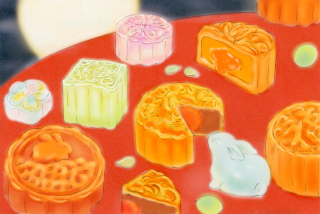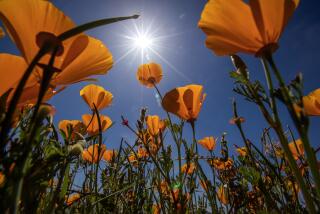Should we be carving jack-o’-lanterns during a drought?

Fairytale Pumpkin Squash
- Share via
You may have heard a few things about pumpkins: There’s a shortage nationwide or there’s a shortage in California due to the drought. Pumpkins use too much water or they’re simply too much trouble to cook.
We won’t address the man-hour issue; only you can decide if it’s worth your while to purchase, cut and, finally, cook. We can, however, speak to some of your other concerns, starting with jack-o’-lanterns.
------------
FOR THE RECORD:
Punjabi pumpkins: In the Oct. 31 Food section, an article about cooking pumpkin Punjab-style at Badmaash misspelled chef Pawan Mahendro’s first name as Nawan.
------------
Most of the pumpkins we buy for Halloween come from the San Joaquin Valley (much of the stuff you buy in cans for pies is grown and processed in Illinois), and this year, Central Valley farmers have produced a bumper crop. An acre of pumpkins needs only a couple of acre-feet of water, so growing them is more drought-friendly than some other crops, such as almonds.
Nonetheless, considering the time, land and water required to grow pumpkins, some farmers in Southern California have cut back on production or stopped it altogether. (Others have scaled back or closed corn mazes to save water for growing pumpkins.)
On a recent Sunday morning, Shu Takikawa unloaded his truck at the Hollywood Farmers Market and talked about winter squash. In addition to his Instagram-ready rows of colorful lettuce, he also brought seven varieties of orange, yellow and white pumpkins that he grows at his Santa Ynez farm, The Garden of …
This year Takikawa is growing only about a quarter acre of pumpkins in the midst of his lettuces and carrots. And he uses a carefully monitored drip tape only once a week for watering. He says the pumpkins are hardy and can handle that.
“When they sprout they search for water,” he explains. “Their root system is deep, and they know how to survive.”
The bottom line? We believe you should give yourself permission to buy and carve or cook. We’re kind of assuming you already have.
The evidence is everywhere, front porches, theme parks, public gardens. Every October, Disneyland’s master pumpkin artists show off their skills creating elaborate character-inspired designs. And at Descanso Gardens in La Cañada Flintridge, artists are creating jack-o’-lantern installations, including monsters, automobiles and dragons crafted from pumpkins.
Sustainable Economic Enterprises of Los Angeles (SEE-LA) offered a kind of compromise at its eight farmers markets. It set up pumpkin decorating booths before Halloween, offering the chance to embellish pumpkins grown by Donal Yasukochi of Rey River Farm with paint, glitter and googly eyes — leaving the pumpkin flesh intact, so it can be cooked and eaten.
But what about your pie prospects? Even where drought is not an issue, weather can still be a factor in pumpkin growing. In the Midwest, heavy June rains took a toll on Illinois farms and, according to some reports, the 2015 harvest will be as much as 50% less than normal, meaning supplies of canned pumpkin could run out by the end of the year.
We don’t want to be accused of hoarding, but we will quietly encourage you not to wait until Nov. 24 to buy canned pumpkin. You might have to scramble that close to Thanksgiving, and banana cream pie probably isn’t what you had in mind.
ALSO:
24 spooky Halloween snacks for the kids
Celebrating Dia de los Muertos with candied pumpkin tamales
More to Read
Eat your way across L.A.
Get our weekly Tasting Notes newsletter for reviews, news and more.
You may occasionally receive promotional content from the Los Angeles Times.










